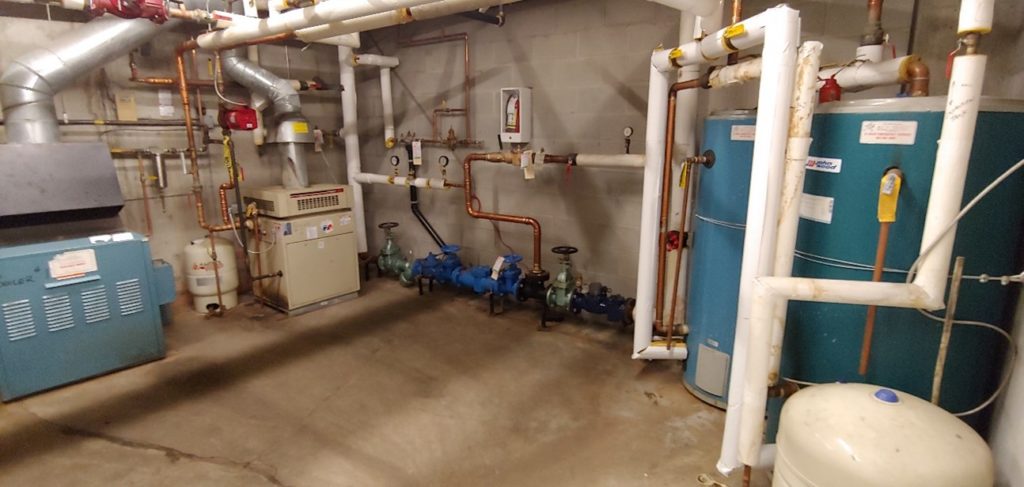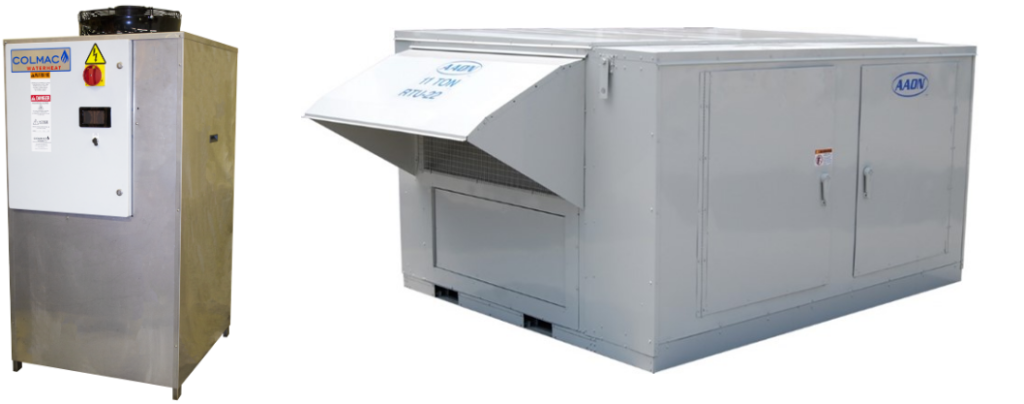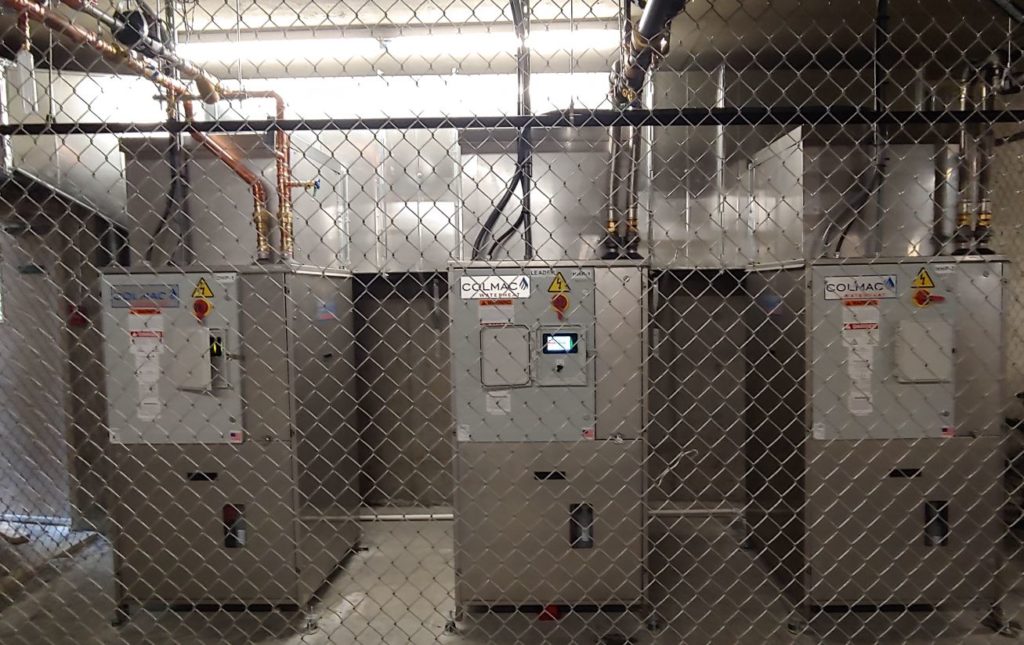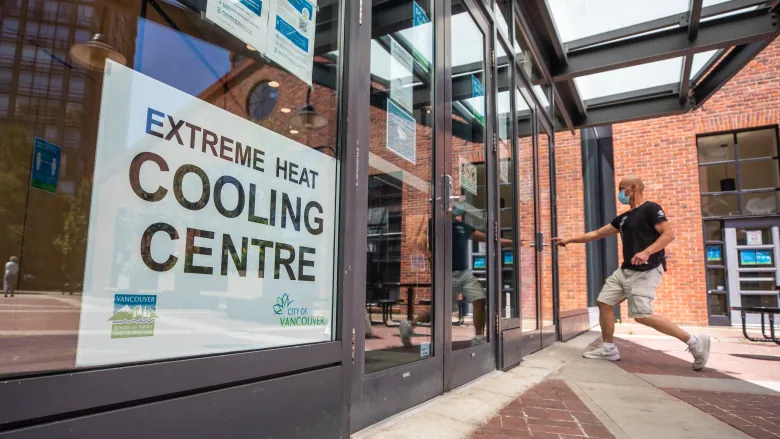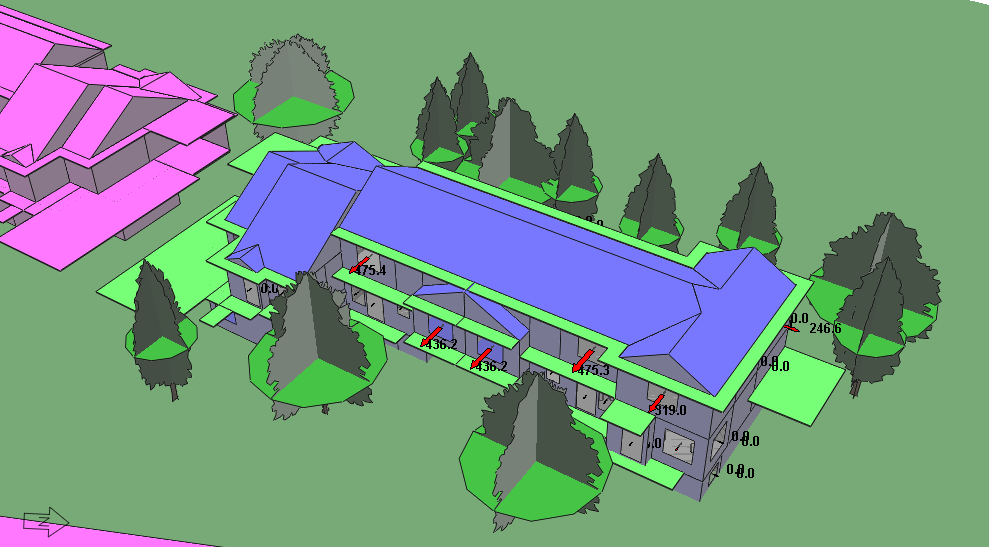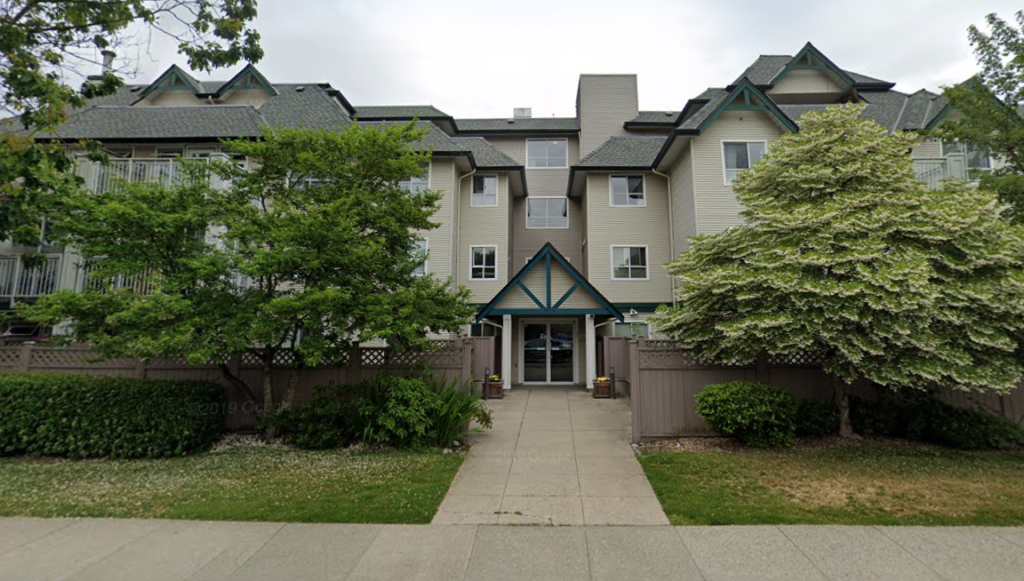
Existing Building Decarbonization: It is feasible!
- Fuel switching (electrification) of existing buildings can be challenging. Heat pump technology is not readily transferable in many cases.
- Typical challenges include space requirements of new equipment, electrical capacity requirements and increased capital costs over like for like replacements.
- With the evolution of heat pump technology, these challenges are being bridged, and Impact are proud to be leading the way with some innovative solutions.
- The journal outlines our approach to achieve 95% carbon savings at an existing BC Housing facility.
An Ideal Opportunity – BC Housing
Replacing fossil fuel HVAC equipment with electric alternatives is no easy feat in retrofit applications. Existing buildings typically have limited spare electrical capacity. They also incorporate mechanical room or roof layouts that may not be compatible with replacement heat pump equipment.
Fortunately, given ongoing advances in heat pump technology, there remain significant opportunities for building retrofits.
One such project our team was engaged on was a four storey apartment building in Vancouver. Our team was tasked with designing a mechanical system retrofit to replace end of life gas consuming equipment.
The building includes an underground parkade, spacious mechanical room, and in-floor radiant heating systems. Our team identified this retrofit as a prime candidate for decarbonization of the heating, ventilation, and domestic hot water (DHW) systems, using air source heat pumps (ASHPs).
Diamond in the Rough
Air Source Heat pumps can be readily applied in the Vancouver region, given our moderate climate. DHW and low temperature in-floor radiant heating systems are well suited to ASHP retrofits, given water can be supplied at 120°F / 50°C.
Building parkades are an excellent source of year-round thermal energy, given their high thermal mass and relatively constant temperatures.
The design team decided early on to use the building parkade as the location for new ASHPs to provide DHW and building heating to the in floor radiant system. The only thing left to do was confirm available electrical capacity.
Initial Investigation
Since original design is commonly based on natural gas infrastructure, many existing buildings simply do not have ample electrical capacity. In order to prove our design strategy, we metered the electrical loads for existing peak demand and compared to the existing electrical service and building systems. Stars aligned – it was determined that sufficient capacity was available for near full electrification of mechanical systems.
Initial Investigation
Collaborating as a team with the building Owner, BC Housing, and other consultants, Impact Engineering proposed the following systems:
- Air source heat pumps in the parkade for space heating and DHW
- Natural gas boilers for back-up
- Hybrid heat pump/natural gas make-up air (MUA) unit on the roof
Technical Considerations
Several key engineering decisions were made to optimize system performance, including:
Space –Two (2) 120-gal storage tanks were replaced with four (4) new 120-Gallon storage tanks for DHW and space heating. Heat pump systems require a greater amount of storage to limit heat pump cycling. A fenced off area was designed in the parkade to accommodate three (3) new ASHPs.
Redundancy – Two (2) ASHPs were designed to serve the most critical building system (heating). Back-up natural gas boilers were included in the design.
Operating Range – Heat pumps typically operate within a specific temperature range with degrading efficiencies and capacities at lower temperatures. ASHPs in the parkade are equipped with freeze protection and defrost function while the rooftop MUA unit uses auxiliary natural gas for heating outdoor air below freezing.
Discharge Air – When in heating mode, heat pumps produce cold air. To prevent uncomfortable temperatures in the parkade, discharge air from the heat pumps were ducted to existing parkade exhaust.
Sound & vibration – Vibration isolation was installed under all equipment to mitigate heat pump compressor vibration. Heavy duty ductwork, internal acoustic insulation and acoustic louvres were implemented to reduce equipment, fan, and air noise through the discharge air.
Up and Running!
As of March 2021, all mechanical systems are now operational and commissioned, with the new heat pumps reliably providing heating hot water, domestic hot water, and tempered ventilation air.
Installation of the new building controls system is underway to allow for remote adjustments to optimize system efficiencies and monitor performance and energy consumption. We will soon be able to compare performance with original calculations, including:
- 98% reduction of annual building natural gas usage
- 95% reduction of annual greenhouse gas (GHG) emissions from building operation
- Predicted annual system Coefficient of Performance (COP) of 3.0 provides similar operating costs compared to original natural gas.
- $70,000 in CleanBC incentives for fuel switching
We would like to thank BC Housing and YWCA for supporting this project.
Lessons Learned
Impact has acquired several lessons learned throughout design and construction process, including:
- When possible, make use of existing parkades to provide warm ambient air for optimized efficiencies and avoid the need for defrost.
- Heat pump discharge air should be exhausted to outdoors to avoid cold conditions in the parkade. This will also maintain high efficiencies and heating capacities, especially when heating is needed most.
- A carefully thought-out controls strategy is essential for proper heat pump operation, and to reliably satisfy building demand, especially when incorporating back-up boilers.
- Hybrid systems still achieve substantial GHG savings. Do not be discouraged if your building is limited by electrical capacity, choose your systems to electrify wisely.
We are excited to continue monitoring operation of the new systems and look forward to sharing results!
Impact Engineering
If you would like to learn more about electrification strategies in new builds and retrofits, please feel free to reach out to our team. ASHPs are well suited for the Lower Mainland climate – let’s take advantage!

